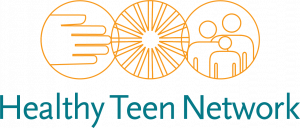Why do we need to use a variety of teaching strategies when teaching sex education? Which ones work best, and why? What can go wrong, and what can we do about it? This training will help instructors answer all of these questions, and feel more competent in delivering engaging and interactive sex education.
Training Hub
The Sex Education Collaborative Training Hub lists trainings for sex educators, facilitators, and other professionals on best practices for sharing important information with clients and the public. From teaching anatomy inclusively to effectively addressing bias in the classroom to addressing racial justice and equity in sex education, the Training Hub includes trainings, technical assistance, and policy support from state, regional, and national leaders in the field of sex education.
Please note: The Training Hub includes both in-person and online professional trainings. If you see a training you are interested in and it isn’t listed as virtual, please reach out directly to any of our members to find out what's possible!
Trainings Offered by State-Based and National Organizations
Displaying results 96 - 100 of 137Teaching Strategies for Sex Education
- Indicator 1 (K-12): Demonstrate three techniques to create an inclusive and affirming learning environment. (S)
- Indicator 1 (K-12): Demonstrate the ability to build rapport with students. (S)
- Indicator 2 (K-12): Demonstrate three student-centered instructional approaches that support a variety of learning styles. (S)
- Indicator 3 (K-12): Explain the differences between positive vs. shaming approaches to teaching sex education.
- Indicator 5 (K-12): Describe three effective strategies for practicing skills with students.
- Indicator 1 (K-12): Explain three reasons why it is important to respond to every question students ask when teaching sex education.
- Indicator 2 (K-12): Demonstrate the ability to effectively respond to three different types of challenging questions. (S)
Human Trafficking 101
This is the first in a series of eLearning units focused on human trafficking. Subsequent units include content specifically for medical providers, educators, parents, caregivers, faith-based professionals, and other youth-serving professionals to better understand the role they can take in addressing sex and labor trafficking. Via an interactive, self-paced unit, participants will explore critical elements of sex and labor trafficking and steps they can take to support victims and survivors in your community. This unit promotes learning though stories, activities, and short quizzes.
Through Healthy Teen Network’s partnership with the University of Maryland School of Social Work’s Prevention of Adolescent Risk Initiative, we are pleased to share resources on human trafficking. Although these resources are focused on specifics for the state of Maryland, anyone from any state can learn about human trafficking as well.
Navigating the Politics of Public Health: Finding Common Ground in Support of Adolescent Sexual and Reproductive Health
In this four-part recorded webinar series, participants will learn how to advocate in support of adolescent sexual and reproductive health with conservative-leaning policymakers and key stakeholders, including:
- strategies for knowing your audience to understand their background and perspective,
- opportunities for finding common ground to work toward a shared goal,
- leveraging the media to increase your public awareness, and
- tactics for identifying and cultivating key messengers and mobilizing your community.
A shifted landscape of new or strengthened power players (particularly, those who lean conservative) at all levels of government, combined with threats to public health investments that our nation’s youth are facing, necessitates a reinvigorated call to public policy action by individuals and organizations that support youth and their families. Build your capacity to navigate the politics of public health and find common ground in support of adolescent sexual and reproductive health.
- Indicator 6 (K-12): Describe three strategies for actively involving parents, caregivers, and other trusted adults in a sex education program.
- Indicator 1 (K-12): Describe three health (e.g. physical, social and/or emotional) and/or academic benefits of sex education for young people
How to Talk About Dual Protection
Designed for educators and clinicians, this eLearning gives participants the information and skills they need to address the increasing rates of STIs, whether working in the classroom or clinic. In this training, you will practice communicating with people who are resistant to using dual protection by using real-life scenarios tailored to your profession. Walk away feeling ready to explain dual protection and confident communicating about the barriers young people are experiencing.
- Indicator 2 (6-12): Demonstrate the steps necessary for effective external and internal condom use and how to access condoms. (S)
- Indicator 4 (6-12): Explain methods of contraception, including the latest medical advances that are popular among young people.
- Indicator 5 (6-12): Demonstrate the steps necessary for effective external and internal condom use and how to access condoms. (S).
- Indicator 7 (6-12): Identify three medically accurate and youth-friendly resources for STD/STI and HIV prevention, testing, and treatment
Whether you are building support for a new program or service or working to sustain an existing program or service, it’s important to build and maintain relationships with key stakeholders, as well as use effective messages and delivery strategies to mobilize diverse audiences to promote adolescent health.
On a national level, Healthy Teen Network's advocacy efforts are focused around promoting and advancing adolescent sexual and reproductive health programs and services as critical to the well-being of our nation. Healthy Teen Network understands the need to maintain a spotlight on adolescent sexual and reproductive health and promote understanding of the interplay of the environment on sexual and reproductive health outcomes.
Want help in your efforts to build support for programs and services? Healthy Teen Network can work with you to…
Develop campaigns, strategies, and materials to support public policy changes at the state or local levels on issues relevant to youth.
Build support and cultivate relationships with key stakeholders, developing positive community engagement.
Write winning grant proposals in support of your fund development efforts.
Share your successes and tell your story, using strategies such as data visualization.
And more! Reach out to Healthy Teen Network to start a conversation to get the policy support you need.
Additional Trainings offered by out-of-state organizations
- ‹ previous
- 41 of 49
- next ›
Sexuality Education Tools for the IDD Community
All people deserve access to medically accurate and developmentally appropriate information related to their sexuality and sexual health. Yet often, individuals with intellectual and developmental disabilities (IDD) are not included in sex education.
- Indicator 1 (K-12): Demonstrate three techniques to create an inclusive and affirming learning environment. (S)
- Indicator 3 (K-12): Describe three elements of a trauma-informed approach to sex education.
- Indicator 4 (K-12): Demonstrate three strategies of a trauma-informed approach to sex education (e.g. giving trigger warnings before content on sexual assault and allowing students the right to pass as appropriate, etc.). (S)
- Indicator 1 (K-12): Describe the importance of teachers’ maintaining professional boundaries when teaching sex education.
- Indicator 3 (K-12): Demonstrate how to reduce the impact of educators’ passive and/or active personal disclosure on the educational environment. (S)
- Indicator 4 (K-12): Explain the roles and responsibilities of a mandated reporter.
- Indicator 5 (K-12): Explain the state- and district-mandated reporting requirements and procedures.
- Indicator 2 (K-12): Demonstrate three student-centered instructional approaches that support a variety of learning styles. (S)
- Indicator 3 (K-12): Explain the differences between positive vs. shaming approaches to teaching sex education.
- Indicator 5 (K-12): Describe three effective strategies for practicing skills with students.
- Indicator 7 (K-12): Demonstrate the ability to analyze and tailor lesson plans to match the age, developmental stages, cultural backgrounds, and other identities of students. (S)
- Indicator 1 (K-12): Describe three distinguishing characteristics between healthy and unhealthy relationships, involving family, friends, and/or romantic partners.
- Indicator 2 (K-12): Explain three ways that healthy relationships can positively impact personal well-being.
- Indicator 3 (K-12): Describe three strategies for teaching students communication skills.
- Indicator 5 (K-12): Describe three ways to help students set and respect personal boundaries in relationships.
- Indicator 1 (K-12): Explain three reasons why it is important to respond to every question students ask when teaching sex education.
- Indicator 2 (K-12): Demonstrate the ability to effectively respond to three different types of challenging questions. (S)
- Indicator 1 (K-12): Describe three health (e.g. physical, social and/or emotional) and/or academic benefits of sex education for young people
- Indicator 1 (K-12): Explain the differences between personal and universal values relating to sexuality.
- Indicator 2 (K-12): Describe how verbal and nonverbal expression of personal values, and comfort with topics related to sex education, could impact one’s teaching
- Indicator 3 (K-12): Explain the importance of educators refraining from sharing their personal values when implementing sex education.
- Indicator 4 (K-12): Demonstrate the ability to respond effectively to students’ values-based comments and questions. (S)

